by Amineddoleh & Associates LLC | Oct 31, 2023 |
Good news, thrill-seekers! Here at Amineddoleh & Assoc., not only do we provide exquisite legal services for our clients, we also know where to find a good, real-life scare. Our secret? Follow the haunted art!
Read on for our recap of our firm’s top haunted art-themed blog posts. Then, book a ticket to see the haunted art in-person. No tricks here, each destination is a true, Halloween treat.
Witch Way to the Party?
In this recent blog post, our firm traveled to Asheville, NC to get a glimpse at America’s Largest Home – and one of the most haunted. Click the link for all the details on this spooky mansion, including its most famous ghost-in-residence. Not only that, this historic home has a strange room known as the Halloween Room for visitors to experience, plus its own secret connection to protecting American art from Nazi air-raids in WWII. As if that weren’t enough to encourage a click, this post also has dazzling photos of Asheville’s gorgeous fall foliage.

Biltmore House in Autumn. Image via R.L. Terry at Wikimedia Commons.
The Ghoulishly Gory Frescos in Rome’s Santo Stefano Rotondo
Ever see art so gory it incites a physical response? Click here for more info on this real-life syndrome, known as Stendhal Syndrome, in which grotesque art and cultural heritage causes viewers to have palpitations of the heart. For those wanting to experience the syndrome in real-life, look no further than Santo Stefano Rotondo in Rome. While most tourists on a Roman holiday select beautiful frescos at the Vatican, those who venture to Santo Stefano will see a different sort of religious art. Go for the scenes of torture, stay for the bloody depictions of senseless violence. Plan to go before lunch, or else risk spilling the contents of your own stomach at the foot of these cultural works.
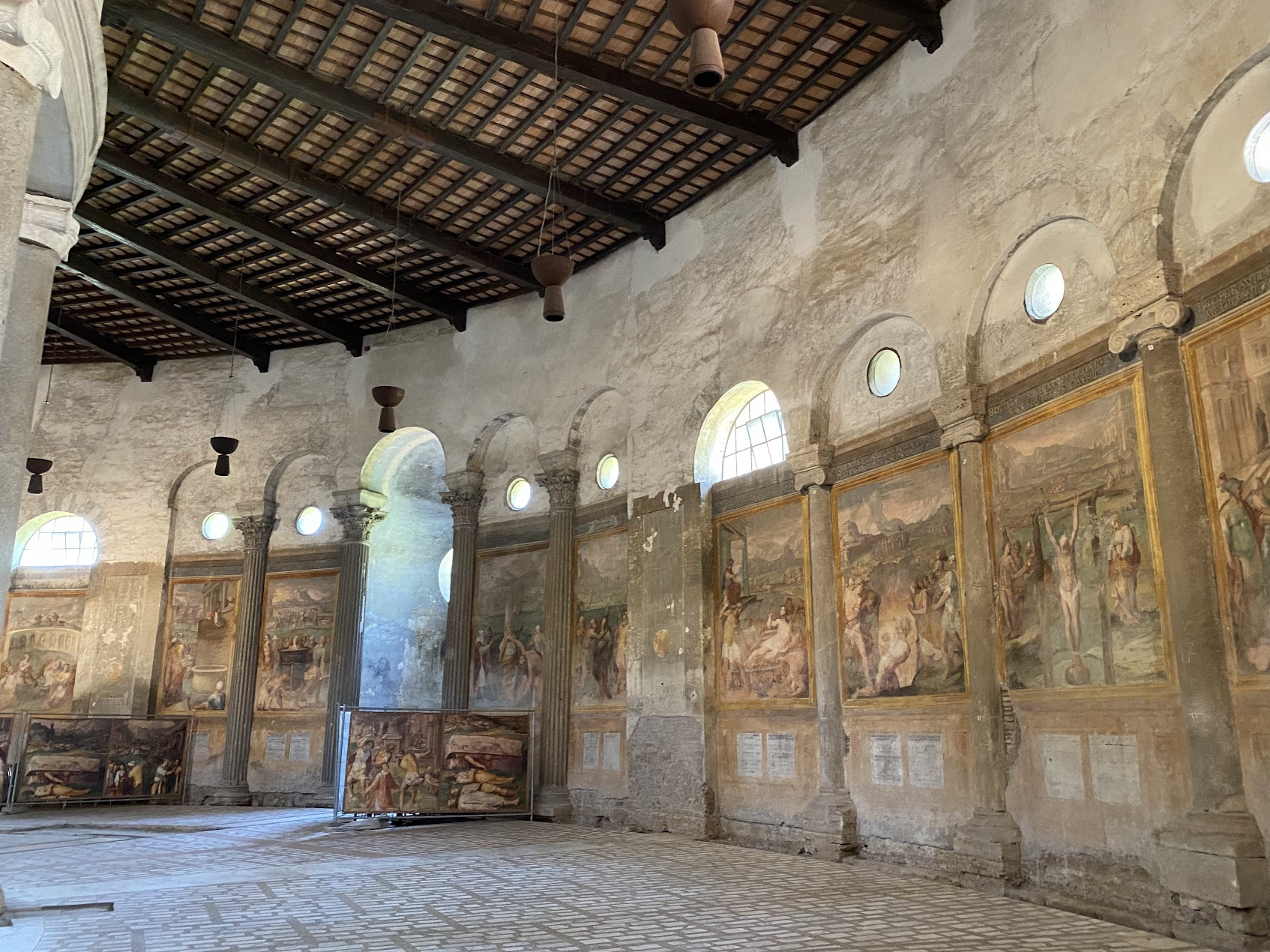
Gory frescoes covering the walls of the church. Image courtesy of Leila Amineddoleh, used with permission.
Cursed Art, from Statues to Paintings
Anglophiles, unite! The National Gallery in London is home to one of the most famous paintings in the world. However, this work is not famous for its artistic qualities (though they are divine). Rather, The Rokeby Venus is better-known for its ability to cause viewers to lose their minds. Click here to read all about this painting’s astonishing – and potentially cursed – provenance. The strange stories behind The Rokeby Venus illustrate how all aspects of a work’s life – including whether or not it is cursed – create its provenance. No matter what your opinion is of The Rokeby Venus’ alleged curse, the documented history of strange occurrences attributed to its ownership has become an important part of the work’s provenance.
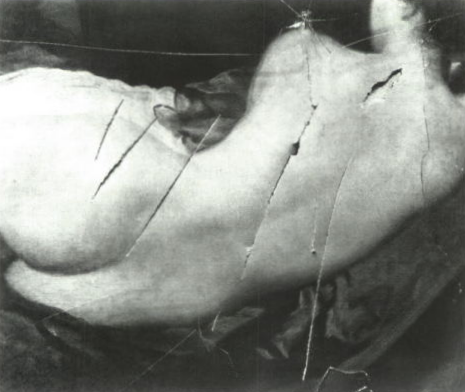
The slashed Rokeby Venus. Image via artinsociety.com.
Haunted Happenings: The Law of Ghosts and Home Sales
If the average Airbnb isn’t scary enough this season, consider visiting a house that’s actually haunted. More and more people are reporting ghosts in domestic settings – and not always friendly ones. Trouble ensues when the place the ghost calls home is up for sale. Lawyers may be faced with the question: is a ghostly presence a condition that must be disclosed prior to sale? Would a reasonable family purchase a house that comes with a frightening ghost? Read more here to discover the actual laws that govern when a family’s new home comes with an unexpected side of ghost.
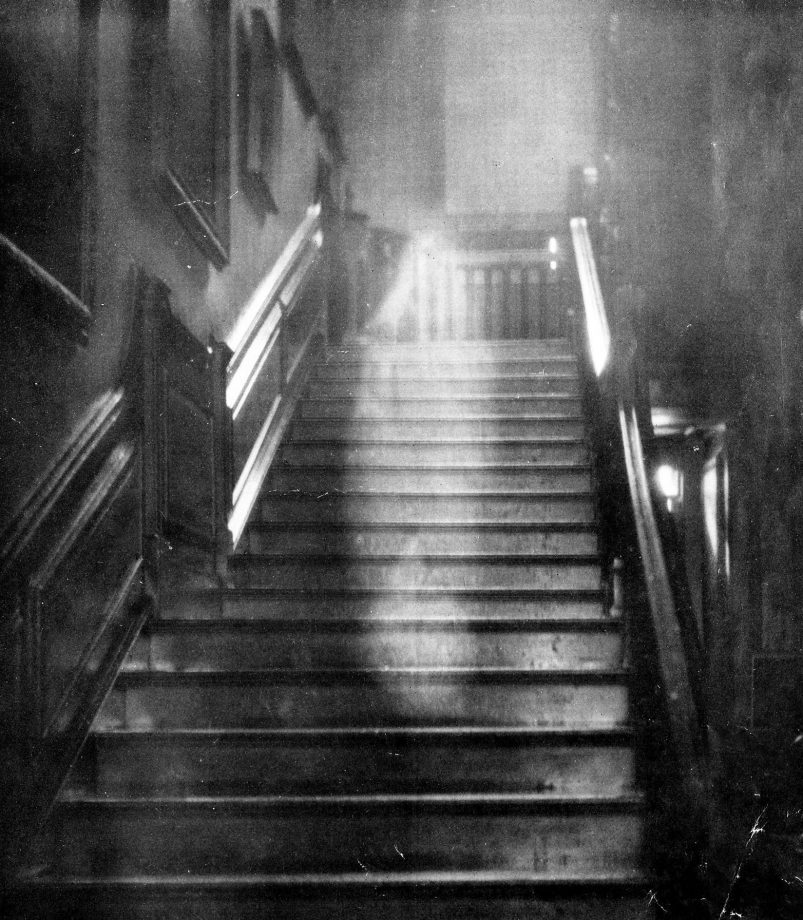
Famous ghost photograph of the Brown Lady of Raynham Hall, originally taken for Country Life (first published in December 1936).
Horrifying Provenance of Monster Manuscripts
This post provides two monstrous holiday destinations in one spooky swoop: ties to Mary Wollstonecraft Shelley’s Frankenstein can be found in both New York City and Oxford, England. Online versions of Shelley’s copious notes and edits for the story can be found on The Shelley-Godwin Archive’s website through the New York Public Library. To pay a visit to the originals, travel to Oxford, where the original transcript are held as part of the Abinger Collection in the Bodleian Library. If that weren’t reason enough to visit Oxford this time of year, stop by Christ Church College for the Harry Potter-esque tour of the storied grounds. Glimpse the inspiration for the wizarding world’s tall towers and cavernous halls on the college campus. Who knows – wizards also might be walking the grounds, masked in their muggle clothes.
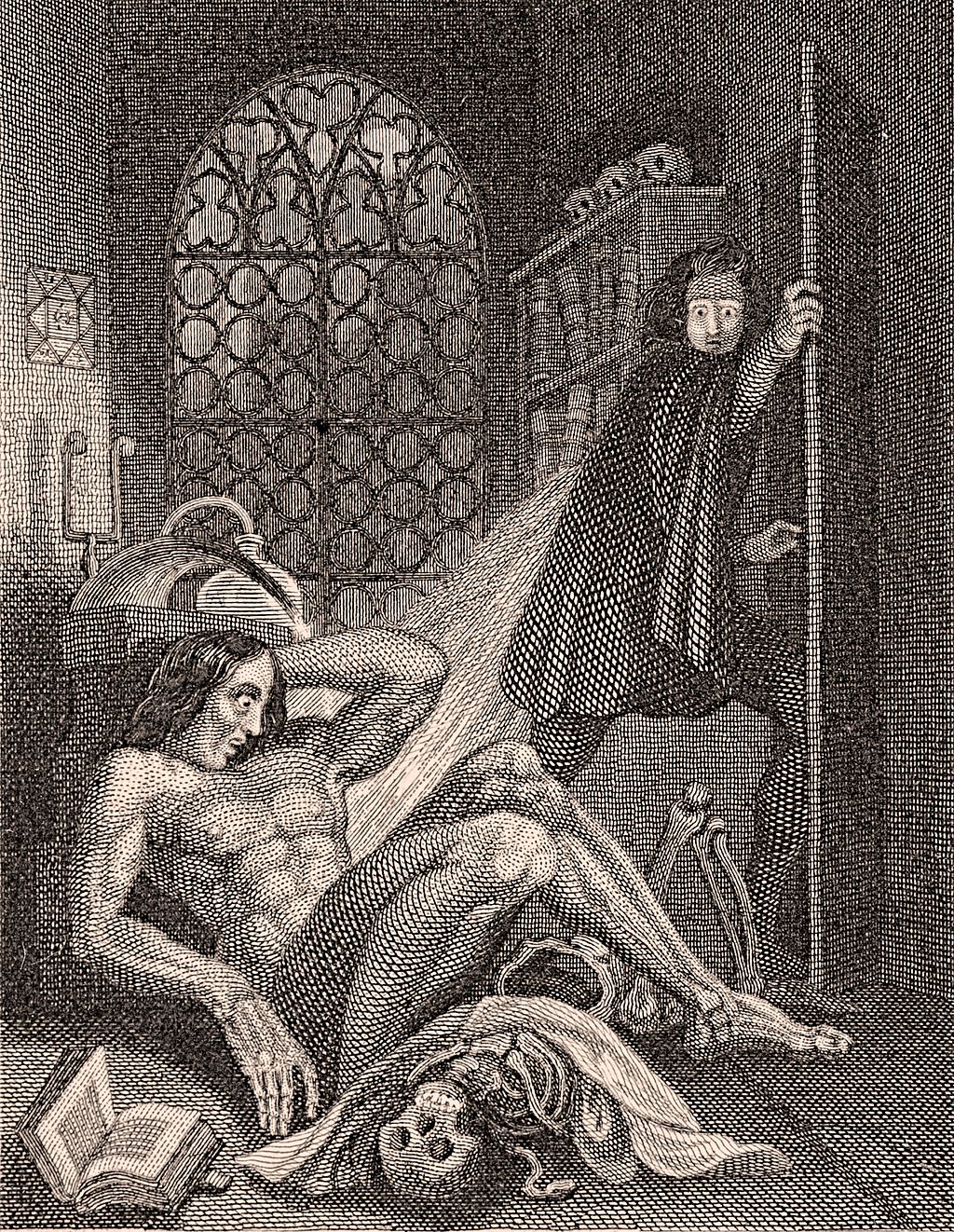
Illustration from the frontispiece of the 1831 revised edition of Frankenstein, published by Colburn and Bentley, London 1831.
The Cat’s Meow: Feline Art Lovers
Word on the street is that the husband of our firm’s founder is dressing as a cat for the second consecutive year this Halloween. While we can neither confirm nor deny the Halloween costumes of our firm’s families (or whether or not, in fact, the members of those families were given the freedom to select their own costumes, or if they were selected for them by their young daughters), click here for a post inspired by our culture’s love for cats in art. Thinking of dressing as a cat this year? As our founder’s husband may say, ‘tis the season!
On behalf of Amineddoleh & Associates, we wish you a safe and Happy Halloween this year!
by Amineddoleh & Associates LLC | Sep 29, 2023 |
 Our founder, Leila Amineddoleh, has recently been featured in New York Metro Super Lawyers Magazine, alongside other leaders in her field. Leila was chosen for the piece as a top-rated intellectual property, art, and cultural heritage lawyer well-known in the industry for getting the job done right. This means advocating both for her clients, and for the art and cultural heritage at issue.
Our founder, Leila Amineddoleh, has recently been featured in New York Metro Super Lawyers Magazine, alongside other leaders in her field. Leila was chosen for the piece as a top-rated intellectual property, art, and cultural heritage lawyer well-known in the industry for getting the job done right. This means advocating both for her clients, and for the art and cultural heritage at issue.
In the article, Leila’s experience working with our former client (and now current friend) Laura Young, is highlighted. Young is our client who found an Ancient Roman marble bust at her local Goodwill in Austin, TX. Our firm has written previously about Leila’s and Laura’s story. Read the incredible journey one Roman bust took from Germany to Texas (and how he found his way home) here.
In the piece by Super Lawyers, Leila’s success working with Laura is illustrative of her signature manner taking care of her clients by providing insight on best practices in the art law field. In Leila’s words, her work as a lawyer requires giving this special level of attention. She says it can require coming up with “creative solutions . . . . As a lawyer, you find out what’s important to someone.”
Later in the article, Leila gives her thoughts on changing attitudes on lawsuits involving stolen antiquities. She connects the rise of modern lawsuits brought by claimants for contested works to a 1995 international investigation in Italy. That investigation exposed many thought-to-be honest dealers as thieves, and revealed and auction houses to be engaging in deceptive practices. Leila explains how the impact of this investigation continues to call objects held by museums, collectors and auction houses into question, leading to an on-going return of hundreds of objects and works of art.
Leila’s success has launched her and her namesake firm to even greater heights. It is an honor to be featured alongside other esteemed colleagues this stand-alone piece. In it, Leila and her colleagues give important guidance on the current industry challenges for art lawyers. Read the piece here.
by Amineddoleh & Associates LLC | Dec 14, 2022 |
In this annual newsletter, Amineddoleh & Associates is pleased to share some major developments that took place at the firm and in the art world during 2022.
LITIGATION AND SETTLEMENT UPDATES
The “Goodwill” Marble Bust

The Marble Bust looted during WWII that was found in Texas and will be returned to Germany
Possibly the most talked about art law matter of the year was the return of an ancient marble bust to Germany. The 2,000-year-old artifact likely originated from Rome, but it was acquired by Bavarian King Ludwig I and then placed in a German museum from where it was looted during World War II. Our client, Laura Young, bought it at a local goodwill shop and ultimately returned it to Germany. It was an honor to advise her and work with her to negotiate the internationally celebrated return.
Copyright Infringement Lawsuit
At the start of the year, we filed a litigation in Iowa on behalf of a muralist, Chris Williams. His work was featured in an advertisement that aired during the Super Bowl. We are currently representing him in a lawsuit for copyright and a violation of his moral rights on the Visual Artists Rights Act.
ART & IP NEWS
One of our favorite things about the art market is that there is always something exciting happening in the art world. Some of our most popular blog posts from this year are found below.
Celebrities and Fossil Collecting
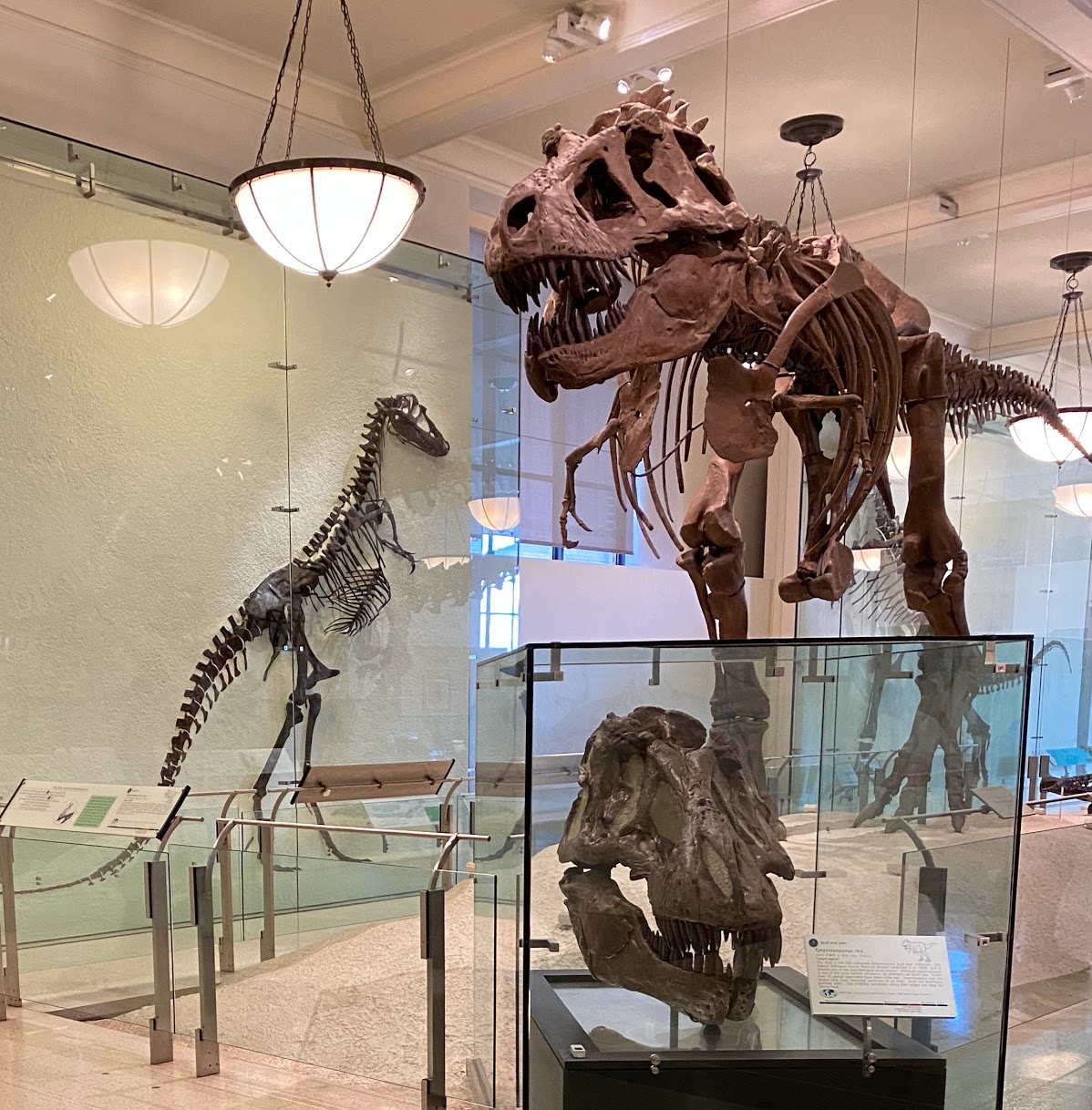
Skeletons in the American Museum of Natural History
In this blog post, our firm examined legal matters involving dinosaur fossils and skeletons, including purchases made by Nicolas Cage, Leonardo DiCaprio, and The Rock. Auction houses have faced growing interest in buyers seeking dinosaur bones. The sales have gotten a lot of attention, perhaps due to the trend of major celebrities making large, public bids for the pieces. As a result of the publicity, countries around the world from which fossils are illegally excavated have presented auction houses with ownership claims, based on their country’s property laws. Copyright law was also an issue for auction houses selling dinosaur skeletons this year because skeletons that are partly comprised of replica bones may come with intellectual property rights in the manufactured pieces.
Fashion Law and Protecting Brands
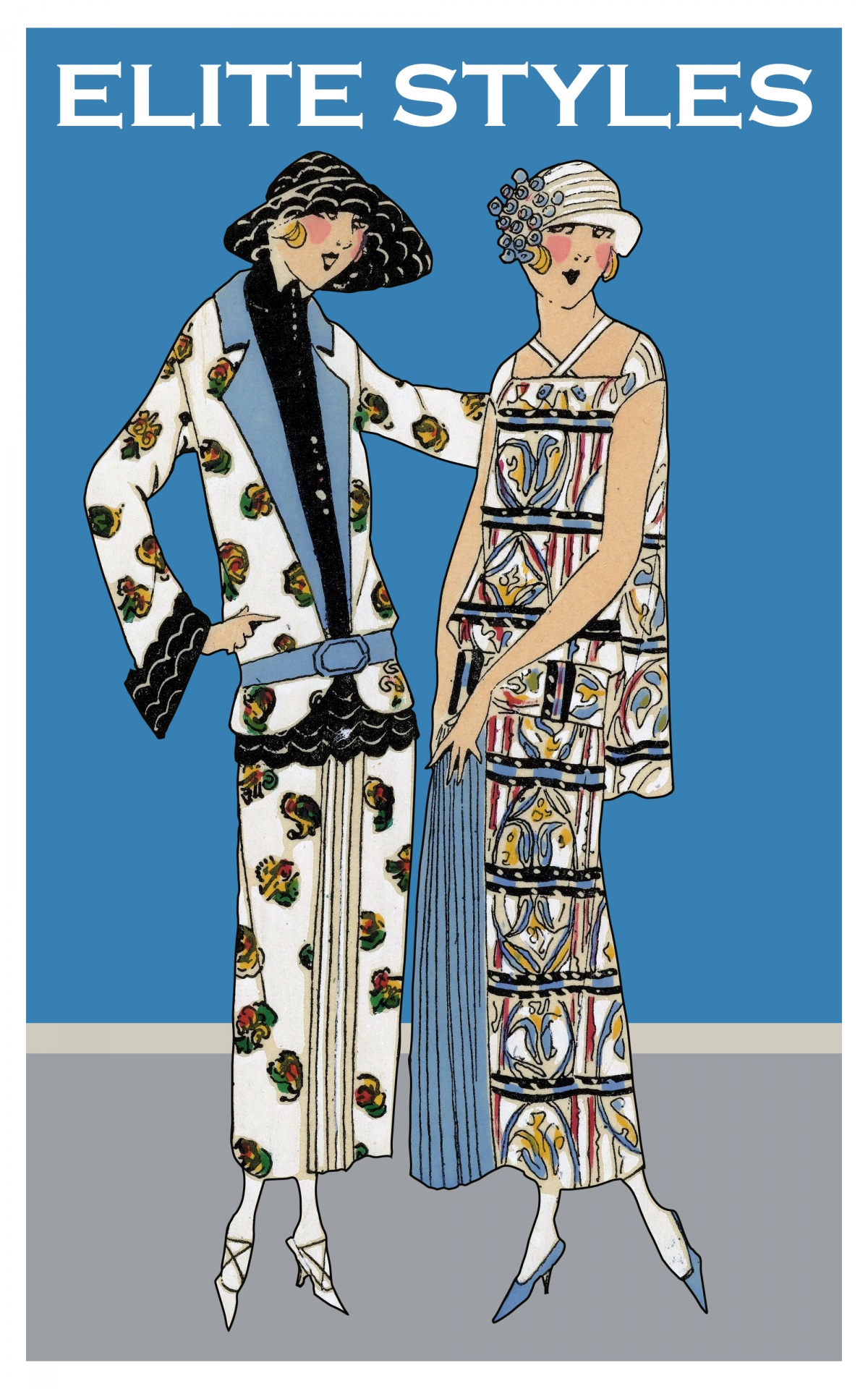 When does the law protect fashion brands? And what is the cost to other artists? Our firm answered these questions in this posts inspired by the Fall 2022 Fashion Weeks taking place around the world. Prominent fashion designers have been known to incorporate logos of other brands into their designs, often as a part of social commentary. Even where artistry is the intent behind the repurposed logo, these designers face financially devastating intellectual property claims from major the brands and companies who own the rights to the logo. Our firm considered how to balance protecting consumers from consumer confusion with giving designers the artistic liberty to create fashion that sparks social commentary. Read more on our website.
When does the law protect fashion brands? And what is the cost to other artists? Our firm answered these questions in this posts inspired by the Fall 2022 Fashion Weeks taking place around the world. Prominent fashion designers have been known to incorporate logos of other brands into their designs, often as a part of social commentary. Even where artistry is the intent behind the repurposed logo, these designers face financially devastating intellectual property claims from major the brands and companies who own the rights to the logo. Our firm considered how to balance protecting consumers from consumer confusion with giving designers the artistic liberty to create fashion that sparks social commentary. Read more on our website.
New York Raises Holocaust Awareness Through New Law
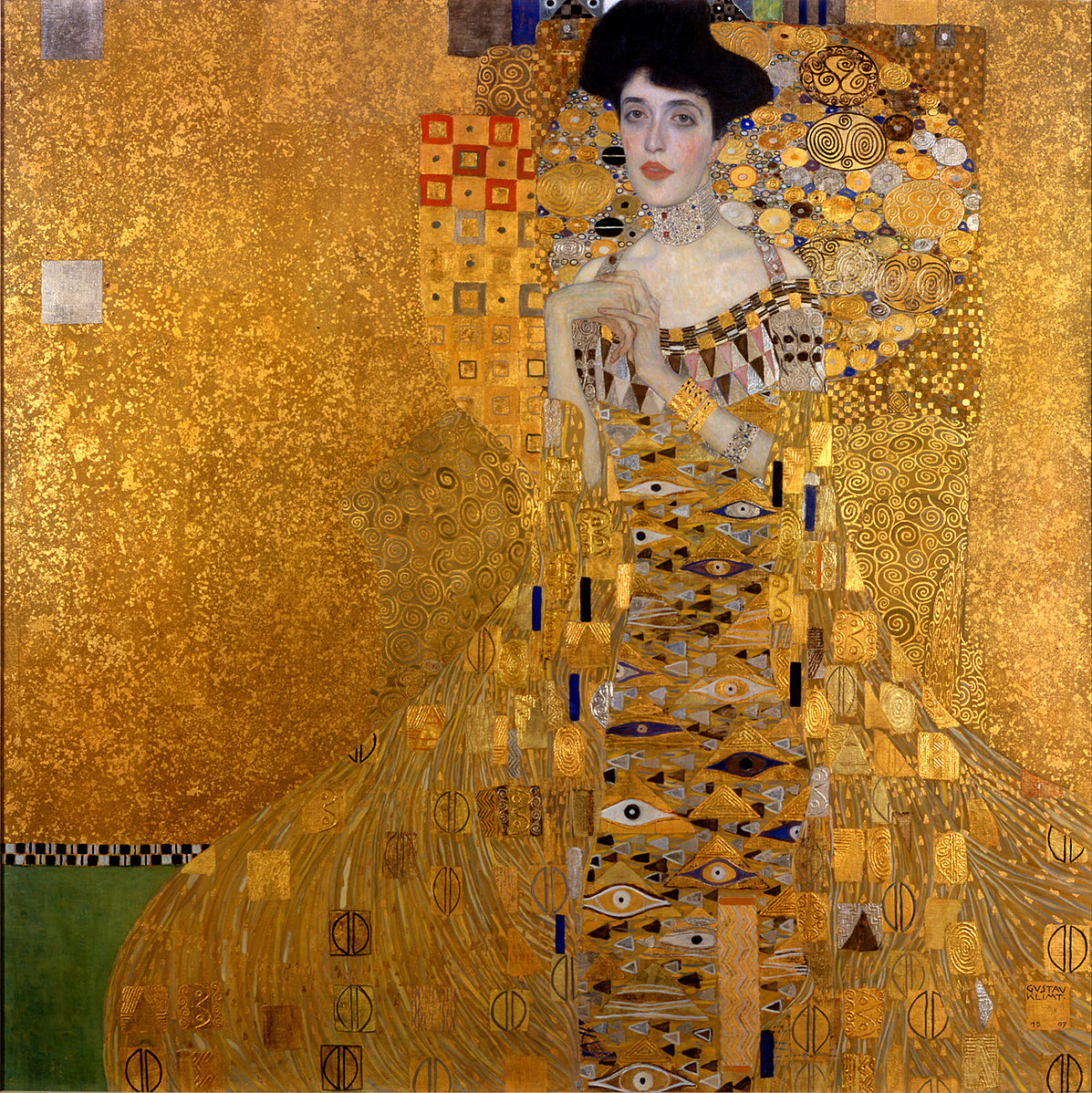
Gustav Klimt’s Woman in Gold
New York State now requires museums to post which artworks on display have links to the Holocaust. The New York bill, which was signed into law on August 10, 2022, accompanied two other Holocaust related bills aimed to combat rising reports of antisemitism. Our firm revisited the difficulty of proving provenance for items acquired during the Holocaust and shortly following WWII. The restitution of these works to families from which the pieces were stolen is incredibly healing.Unfortunately, such claims for the return of priceless works of art often have to overcome enormous legal hurdles, such as the difficulty of proving provenance in court and FSIA claims brought by countries who now claim possession. Read more on our website.
LAW FIRM UPDATES AND EVENTS
New Team Members
Our firm welcomed two new members to join our team, Yelena Ambartsumian and Maria Cannon. Yelena joins the firm as Counsel, while Maria joins us as an associate. We are proud to have Yelena and Maria as members of our team, and we wish them both a warm welcome.
Firm Founder Listed by Chambers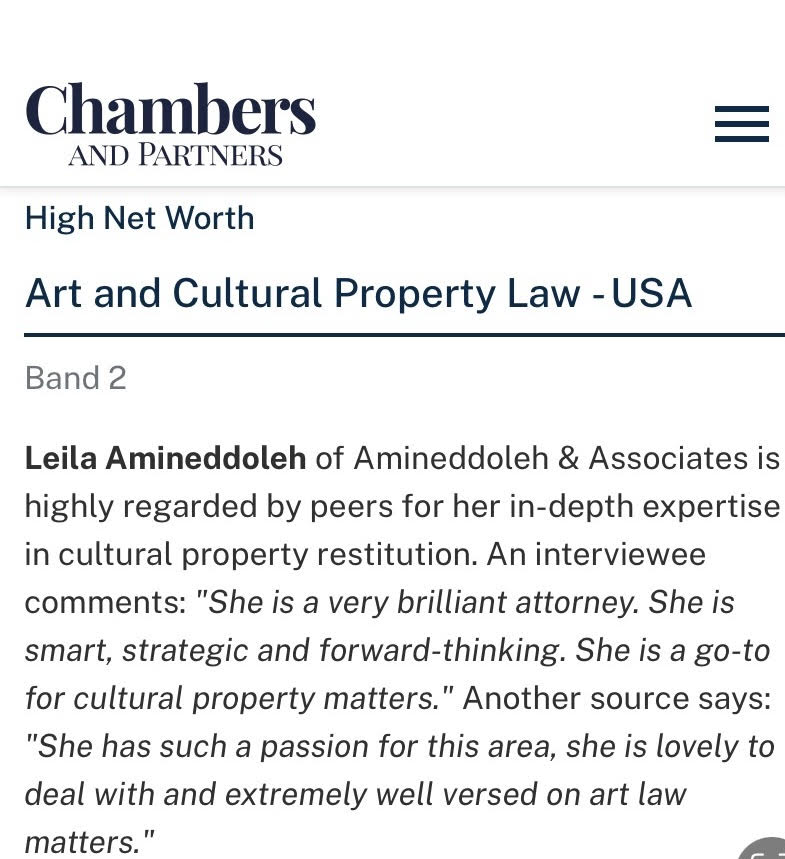
This year, firm founder Leila A. Amineddoleh was recognized by Chambers and Partners High Net Worth Guide for her work in Art and Cultural Property Law. The publication named Leila “a brilliant attorney,” and “a go-to for cultural property matters.” The publication also remarked on her passion for art law and her wealth of experience in the field. Read more here.
Art Law Conferences
Congratulations to our firm’s founder Leila A. Amineddoleh, who successfully chaired the 14th Annual NYCLA Art Law Institute, one of the most anticipated events of the year. Earlier in the year, in March, Leila presented the keynote speech at Yale University’s conference “Dura-Europos: Past, Present, and Future.” The conference focused on the systematic looting of Dura-Europos that took place during the Syrian civil war and during prior millennia. Leila presented on the history of cultural heritage looting and modern efforts to prevent such plunder. Read more about the conference here.
Leila was also a speaker at the Salmagundi Club, one of the oldest arts organizations in the U.S. Her other speaking engagements included moderating a panel for Art Appraisers’ Association Art Law Day and for Fordham’s Intellectual Property Law Journal’s 30th Annual Symposium, “Duplicate, Decolonize, Destroy: Current Topics in Art and Cultural Heritage Law.” In addition, she spoke at conferences hosted by Cardozo School of Law and Notre Dame School of Law. At Cardozo School of Law, Leila spoke on a panel at a symposium discussing cultural property ownership. Read more here. At Notre Dame’s Journal of International and Comparative Law Symposium, she served as panelist at the symposium, “International and Comparative Approaches to Culture”, and discussed antiquities disputes and repatriation of cultural heritage.
Associate Claudia Quinones presented on the “What’s New in Art Law?” panel at the 14th Annual NYCLA Art Law Institute. Her presentation covered title and ownership disputes, new technologies, and climate change activism in the art world. Details about the conference can be found here.
Yelena’s speaking engagements included Fordham Law School’s 30th Annual Intellectual Property Law Journal Symposium as a panelist on “Erased: Protecting Cultural Heritage in Times of Armed Conflict.” She also was a panelist at American University of Armenia’s Center for Truth and Justice Inaugural International Conference, “Cultural Heritage at Stake: How to Preserve, Mitigate Damage, and Punish Destruction.” Read more about the conference here.
IN THE PRESS
Leila appeared in the New York Times a number of times this year, in addition to Artnet, The Art Newspaper, the Observer, the Washington Post, USA Today, People Magazine, and Town + Country Magazine. She discussed a variety of topics, including the art market, cultural heritage disputes, Nazi-looted art, intellectual property disputes, and art collecting practices. Leila also appeared on WPIX-NY and in a number of podcasts.
CLIENTS AND REPRESENTATIVE MATTERS
Sculpture Garden Commission at the Smithsonian Institution
We are very proud to have served as legal counsel to famed artist Hiroshi Sugimoto for a number of his commissions, including his highly anticipated sculpture garden at the Hirshhorn Museum, part of the Smithsonian Institution.
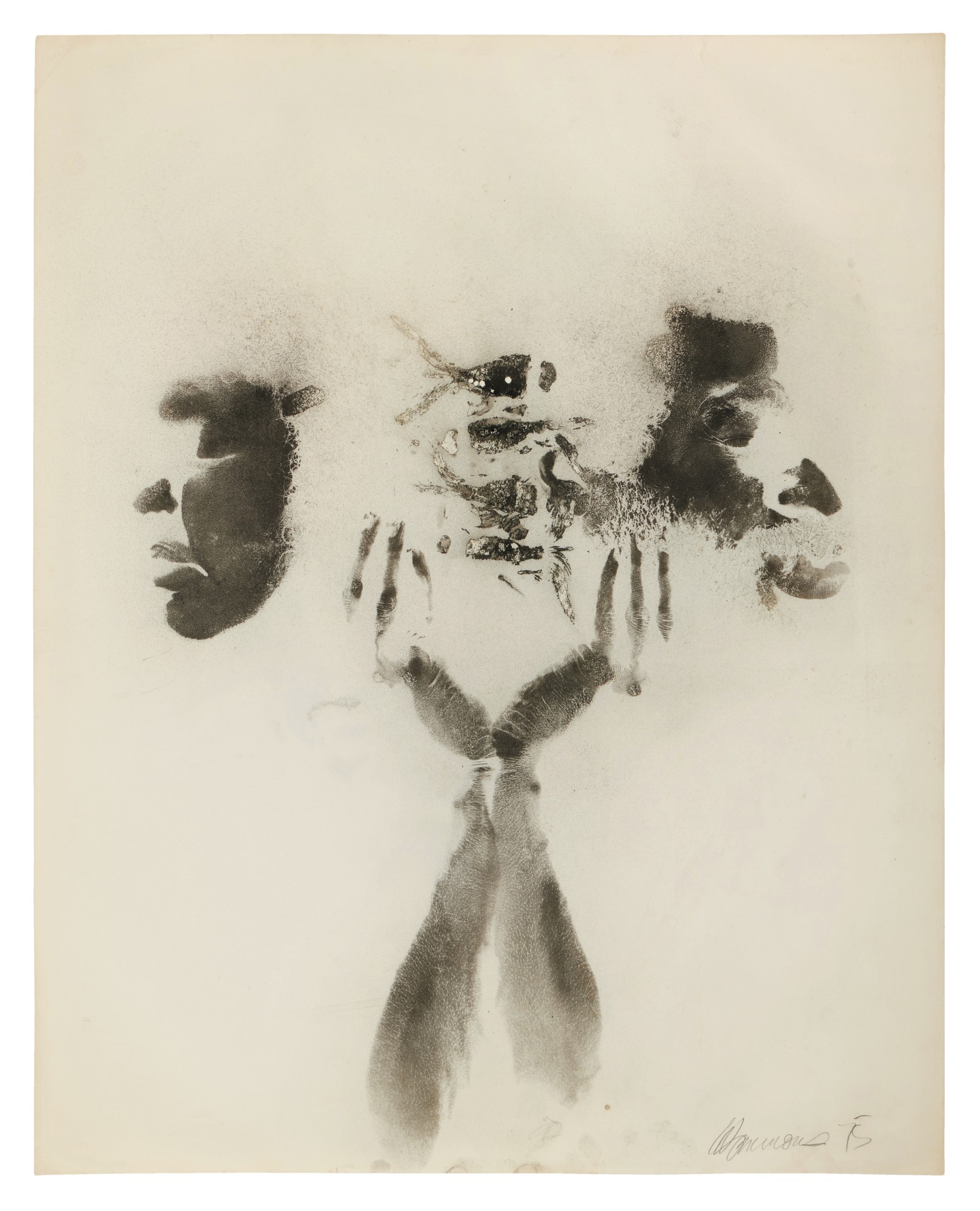 Auction Sales
Auction Sales
We worked with a number of clients to assist them with consigning art for sale at auction. One of our clients is the collecting family that consigned three works by David Hammons for the Sotheby’s Contemporary Evening Auction and one work at the Contemporary Curated sale earlier in the spring. Sotheby’s touted these works and their provenance, after the paintings remained with our clients for nearly five decades. All four of the works performed well, with two of them selling for above their high estimates.
Trademark Clients
We continue working with brands, artists, and companies by advising and serving as trademark prosecutors. Included among our clients are luxury watch brands, fragrance companies, and musicians, including multi-platinum songwriter and produced Jonas Jeberg.
Advising Art Market Players on New Platforms
While we often work with traditional art market participants (including artists, collectors, foundations, auction houses, museums, art advisors, and art experts), we are also happy to be at the forefront of the art and cultural world. As new art platforms and technologies develop, we are pleased to work with exciting online galleries, NFT platforms, novel art collecting exchanges, and artists exploring new media. We look forward to continue cutting edge work in the art sector.
On behalf of Amineddoleh & Associates, we wish you a happy and healthy holiday season and a wonderful and prosperous new year.
by Amineddoleh & Associates LLC | Oct 27, 2022 |
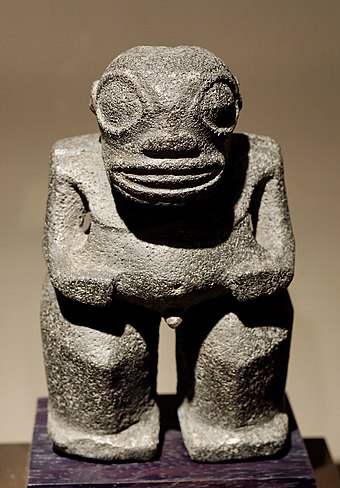
Tiki statuette from the Marquesas Islands (currently in the Louvre)
Those who grew up watching The Brady Bunch re-runs on “Nick @ Nite” (or the popular series Scrubs) may recall a set of spooky episodes: the family’s ill-fated trip to Hawaii. What made the story arc so memorable was not the beautiful scenery, but that the narrative included a mysterious ancient curse. The curse comes into play when Bobby finds an ancient cultural artifact – a small tiki statue – and brings it home. Viewers quickly learn that whoever holds the statue experiences misfortune. The family ultimately returns the statue to a cave in order to break the curse, thus restoring peace and harmony to America’s favorite (1970s) TV family. As for Scrubs, main protagonists Turk and JD wear replicas of the tiki statue and face their own misfortunes, which they attribute to the curse.
These episodes are obviously fictional, but they illustrate an important aspect of cultural heritage; namely, how the provenance of an artwork or cultural artifact can influence modern perceptions and inspire stories that last for generations. In the case of the tiki statue, the modern misfortune attributed to the statue by the Bradys, Turk, and JD became part of its cultural identity.
Provenance
As we have highlighted in previous blog posts, provenance is an essential aspect of cultural heritage objects, as it reflects their history and cultural significance within a larger context. Not only does provenance delineate the proper origin and ownership of a piece, it also illuminates how contemporary culture influences the way an artifact is perceived in modern society. As part of our series of Halloween-themed posts, we are examining paintings, artifacts, and architectural sites whose provenance includes a spooky legend in modern culture. (You can also find last year’s “Unlucky Mummy” blog post here and the ghoulish frescoes of a Roman church here.
A Cursed Painting
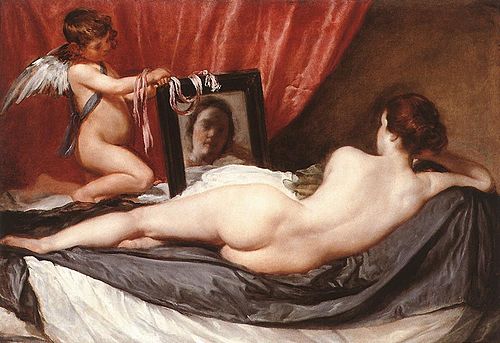 The Rokeby Venus is Velázquez’s only surviving nude, and it is known to have a mysterious aura with a tendency to incite psychosis in its viewers. Diego Velázquez, a leading artist in King Phillip IV’s court in Spain, is the artist behind the hauntingly beautiful Rokeby Venus. More correctly referred to as The Toilet of Venus, the work goes by the name The Rokeby Venus in many modern descriptions after the English mansion (Rokeby Park) from where it was located from 1813-1906. The work depicts the goddess Venus gazing at a mirror being held by Cupid, who is shown as serving the goddess while she reclines. The hazy, unfocused gaze of the goddess makes it unclear whether Venus is using the mirror to view her own reflection or whether she is staring judgmentally at the viewer. This visual trick serves to both captivate and unnerve the audience, a dynamic that is particularly heightened by the historical origin of the work.
The Rokeby Venus is Velázquez’s only surviving nude, and it is known to have a mysterious aura with a tendency to incite psychosis in its viewers. Diego Velázquez, a leading artist in King Phillip IV’s court in Spain, is the artist behind the hauntingly beautiful Rokeby Venus. More correctly referred to as The Toilet of Venus, the work goes by the name The Rokeby Venus in many modern descriptions after the English mansion (Rokeby Park) from where it was located from 1813-1906. The work depicts the goddess Venus gazing at a mirror being held by Cupid, who is shown as serving the goddess while she reclines. The hazy, unfocused gaze of the goddess makes it unclear whether Venus is using the mirror to view her own reflection or whether she is staring judgmentally at the viewer. This visual trick serves to both captivate and unnerve the audience, a dynamic that is particularly heightened by the historical origin of the work.
Velázquez’s seductive portrayal of the goddess of love would have been a bold choice in light of the highly conservative mores of the Spanish court, heavily influenced by Catholicism. While modern viewers may find the piece less shocking than its original audience, the Rokeby Venus could be read as intentionally prurient, given Spanish politics at the time.
Psychosis
Venus’s overt sexuality and youthful beauty pinpoint the origins of the alleged curse. When the work was inherited by the 13th Duchess of Alba as part of her duchy, the renowned beauty hung the portrait on display in her quarters. But like the portrait of Dorian Gray brought to life by Oscar Wilde centuries later, the painting became a sinister reminder of the viewer’s mortality. According to rumor, the aging Duchess seems to have been unfamiliar with the concept of aging gracefully. Incensed by the unchanging youthfulness of Venus, while she, herself, battled the demons brought on by her deteriorating looks, the Duchess is believed to have committed suicide in response. Though there may have been other explanations for her tragic early death, her family and friends attributed the cause to none other than The Rokeby Venus.
When the work was next acquired by Don Manuel Godoy following the Duchess’s alleged suicide, the curse of The Rokeby Venus once again brought about its owner’s downfall. Prior to owning the painting, Godoy was – by all accounts – truly living his best life. As a respected and celebrated politician, he became extremely influential in the Spanish Royal Court. Then, Napoleon came into the picture. Suffice to say, it is difficult to blame the entire collapse of the Spanish imperial empire on a single individual. Even so, Spanish citizens gave it their best shot when they elected Godoy as their universal scapegoat. Godoy was eventually exiled from Spain and became a prisoner of Napoleon himself, later living a life of obscurity in Paris. His extreme reversal of fortune was blamed on the cursed Rokeby Venus.
After ruining Godoy’s life, The Rokeby Venus seemed content to withdraw for a while. During the next few changes of ownership, there were no reports of misfortune brought on by the painting. But then, in 1914, The Rokeby Venus curse reared its head. After being purchased by the National Gallery in London, the painting cast its malevolent spell on its next (and most recent) victim.

The slashed painting
Late on the night of March 10, 1914, English suffragette Mary Richardson broke into the National Gallery. She was armed with a meat cleaver and a single-minded goal: to destroy The Rokeby Venus. After slashing the painting seven times, she was apprehended by museum guards, who were perplexed: why attack this canvas? By way of motive, “Slasher Mary” (as she became known in the press) claimed that the Venus’ bare, rotund backside caused men to “gape at her” all day long, as if spellbound, when they visited the museum. She emphasized that the slashing was done in protest of the lascivious male gaze, and to support the advancement of women in their battle for political rights after the arrest of fellow suffragette Emmeline Pankhurst. In light of her statements, we are left to wonder whether Mary was really driven by political dogma, or whether she too was a victim of the madness said to be brought on by the painting’s display, which had lain dormant for a century. While the real answer is unknown, the spooky season invites us to imagine that Slasher Mary was driven to the brink by the painting’s alluring power.
An Unusual History
No matter what your opinion is of The Rokeby Venus’ alleged curse, the documented history of strange occurrences attributed to its ownership has become an important part of the work’s provenance. The stories behind The Rokeby Venus illustrate how all aspects of a work’s life – beginning with its origin and continuing through its interaction in a modern context – create a vivid tapestry of life behind what would otherwise be a merely decorative object. How a culture understands and makes sense of a piece gives the piece context, longevity, and life. For now, we continue to admire The Rokeby Venus, but let’s do so from afar.
The Rokeby Venus’s Provenance
by Amineddoleh & Associates LLC | Sep 9, 2022 |
A New York bill signed into law on August 10, 2022 will require museums to provide a notice to viewers if works of art on display have links to the Holocaust. This groundbreaking and restorative legislation accompanies two other Holocaust-related bills signed into law: one aimed at increasing Holocaust literacy through curricula in educational institutions, and the other designed to increase pressure on banks that assess fees related to Holocaust reparations. All three bills work in concert to combat rising reports of antisemitism through these targeted cultural, economic, and educational channels.
Provenance
While other states are considering enacting similar legislation to increase Holocaust literacy in schools, New York stands apart in dictating these trailblazing requirements for museums to publicly acknowledge the devastating conditions under which they may have acquired certain works. The origin of a work of art is known as its provenance, and its applicability extends beyond Holocaust-era stolen works (you can access our blog post on the fight to prove provenance for Mexican antiquities here). Provenance is important not only to establish a chain of title when purchasing a work, but also to determine its cultural, political, and financial value.
Proving provenance is no small task, particularly when items have been stolen. This task is rendered even more difficult when the theft occurred during or shortly after the chaos of war. In the case of works stolen during the Holocaust, both these hurdles were present, with the added complications of global economic upheaval, unimaginable human suffering, an overwhelming refugee crisis, and the genocide of the class of people from whom the works were primarily stolen. The process of proving provenance for works stolen during WWII typically involves the heirs of deceased Jewish family members bringing claims to museums in hopes of establishing legitimate ownership of works held by a museum through whatever documents were salvaged after the war. This can include references in letters and diaries, family photographs, and bills of sale. The museum then has its own systems to determine the legitimacy of such claims. If provenance is not proven after the museum’s internal investigation, the museum is then able to claim that it “legally” retains the artwork.
 Of course, this is devastating news to families seeking to reclaim an important piece of family heritage. If a museum denies heirs’ claims, they may proceed to file litigation. One high-profile example is Gustav Klimt’s portrait of Maria Altmann, titled Woman in Gold. Another is the ongoing Cassirer case, involving the Museo Thyssen-Bornemisza in Madrid. However, these cases often take years – if not decades – to resolve, leaving the artwork in legal limbo until a final decision or settlement is made.
Of course, this is devastating news to families seeking to reclaim an important piece of family heritage. If a museum denies heirs’ claims, they may proceed to file litigation. One high-profile example is Gustav Klimt’s portrait of Maria Altmann, titled Woman in Gold. Another is the ongoing Cassirer case, involving the Museo Thyssen-Bornemisza in Madrid. However, these cases often take years – if not decades – to resolve, leaving the artwork in legal limbo until a final decision or settlement is made.
It is important to keep in mind that Gov. Hochul’s new law does not specifically address the need to return works to individual families (restitution). However, it does bring to light the importance of acknowledging a work’s provenance as an important cultural indicator of the suffering of a class of people, even if it does not repair the harm done to individual families. Thus, the heirs or successors-in-interest of a dispossessed owner will need to rely on alternative avenues to recover their property.
Restitution
The effect of the public notice requirement speaks to justice outside the courts that can be accomplished through the voluntary restitution of stolen artwork. When restitution is carried out by leading art institutions as part of a larger “duty to remember,” it aids in cultivating peace and strengthening non-legal measures of restitution. Furthermore, it sets a positive example for other art world participants. While public art institutions have often not returned potentially looted art to the heirs of their original owners when proof of theft is not evident, many have expressed a desire to not retain stolen work. Even so, museums as a whole tend to be reluctant to part with prized pieces, particularly when the works claimed as stolen are the very ones that draw visitors to their galleries.
Case law
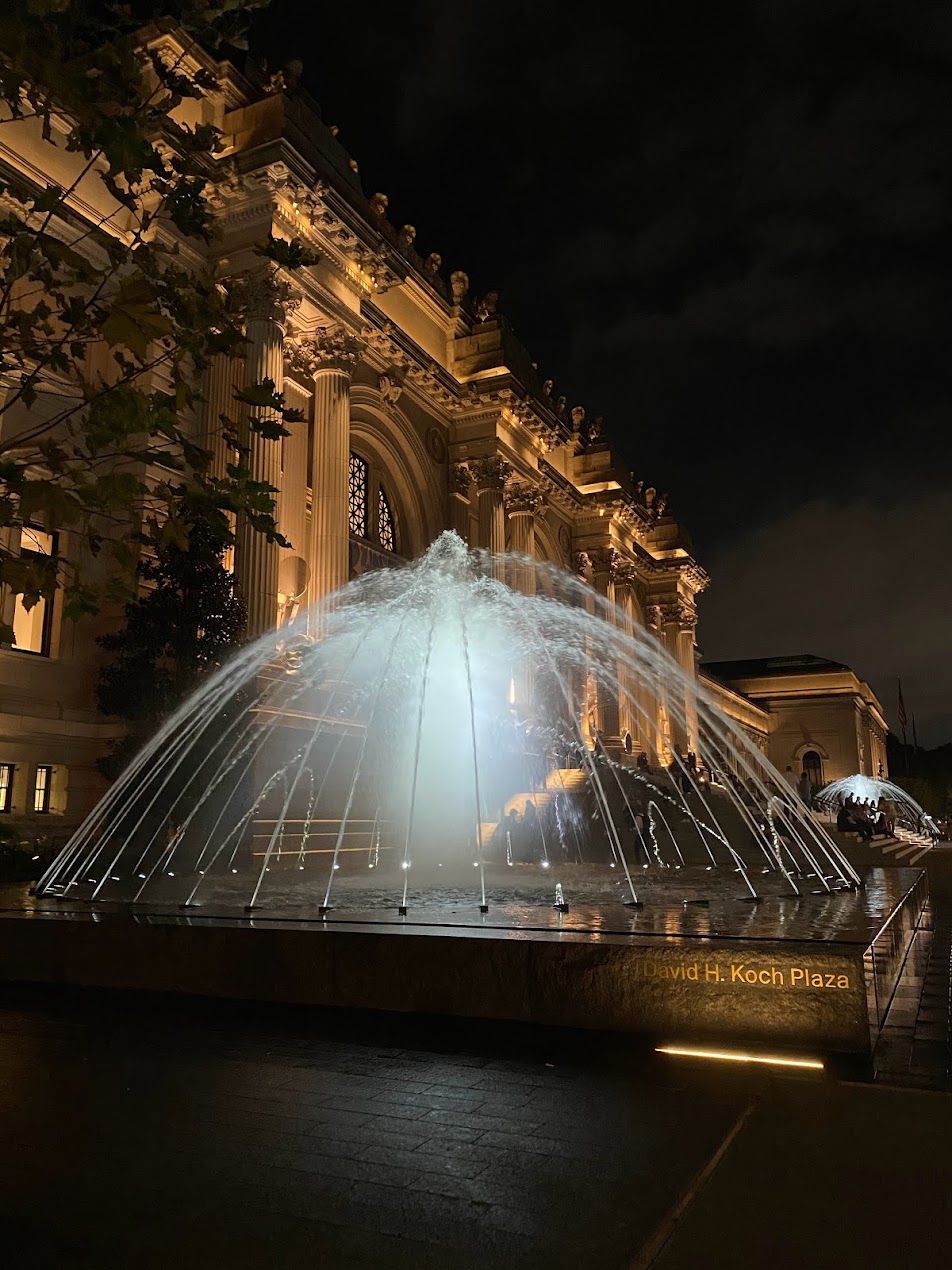 Decades of case law in the U.S. indicate the difficulties facing claimants. Recent cases against New York museums resulted in wins for the institutions, yet not due to the merits of each respective case. Rather, the Museum of Modern Art squeaked out wins through a confidential settlement, and defended itself by claiming that the statute of limitations had run. In another case, the Metropolitan Museum of Art made the affirmative defense of laches, under the theory that claimants made an unreasonable delay in bringing suit against the museum for a valuable painting by Picasso.
Decades of case law in the U.S. indicate the difficulties facing claimants. Recent cases against New York museums resulted in wins for the institutions, yet not due to the merits of each respective case. Rather, the Museum of Modern Art squeaked out wins through a confidential settlement, and defended itself by claiming that the statute of limitations had run. In another case, the Metropolitan Museum of Art made the affirmative defense of laches, under the theory that claimants made an unreasonable delay in bringing suit against the museum for a valuable painting by Picasso.
Even the most recent ruling in the Guelph Treasure litigation did not fare well for the claimant heirs. The Guelph Treasure litigation follows claims brought by the heirs to a priceless haul of German ecclesiastical relics, currently on display in the Bode Museum in Berlin. The heirs claim that the relics were sold under duress to the Nazi government in 1935 for less than their market value. The museum’s foundation argues that the sale was voluntary, and, further, was not made under the pressure of Nazi occupation in Germany.
Last month’s ruling by the District Court for the District of Columbia dismissed the case on jurisdictional grounds, stating that the Foreign Sovereign Immunity Act (FSIA) blocked suit of Germany in U.S. court (this confirms the holding by the U.S. Supreme Court that remanded the matter to the district court). The claimants relied on an exception to the FSIA which prohibits expropriations that violate international law, arguing that dispossession in cases of genocide qualified for this rule. However, the court found that the claimants failed to prove that their ancestors were not German nationals at the time of the sale, meaning that only domestic law – not international law – was involved. As such, U.S. courts do not have subject matter jurisdiction over the matter, meaning that U.S. courts are unable to make determinations on German domestic law.
The district court’s decision does not eliminate the possibility of appeal or further pursuit of the Guelph Treasure through alternate measures in Europe. However, claimants often prefer to file disputes in the U.S. because American courts have historically been more lenient for Holocaust-related actions, particularly on statute of limitations grounds. In most European countries, causes of action for property stolen or lost during WWII have already expired. For example, Poland recently passed legislation that reduced the statute of limitations on all restitution cases to 30 years from the theft’s occurrence; this effectively bars all Holocaust restitution claims.
It is important to note that not all hope is lost. Some museums have, on their own initiative, refused to turn a blind eye to the problematic origins of some of their beloved works. The North Carolina Museum of Art, for example, returned a 16th-century painting by Lucas Cranach the Elder to an Austrian family after learning that the work was stolen by Nazi officials in 1940. And the Museum of Fine Arts in Boston (MFA) recently returned View of Beverwijk by Salomon van Ruysdael to the descendants of a Jewish art collector and politican, from whom the work was stolen by Nazi forces.
In the case of the return of View of Beverwijk, the museum and the claimant family each had a role in making the restitution possible. First, the MFA received new provenance information regarding the work and updated its museum website. The family’s lawyer then used that new information to provide a missing link to prove their ancestor’s possession.
It was truly a moment of teamwork, and sets an example for other museums seeking to actively become part of the solution in remedying the trauma of the Holocaust. The MFA’s curator for provenance, Victoria Reed, stated (upon the return), “To be able to redress that loss, even in a tiny way, I think, is gratifying. And it certainly is part of what we should be doing as a museum.”
At the same time, voluntary returns of artwork by museums are few and far between, and the battle for individuals seeking to prove provenance remains a lengthy, cumbersome, expensive, and uphill battle. In light of these hurdles, requiring museums to publicly notify guests of the potentially tragic origins of works they have on display is a start. Doing so gives voice to the people who were silenced under the traumatic and systematic genocide of the Holocaust and lost their homes, families, and ties to their history and culture.
New York’s actions, in this sense, are an act of strength in the face of the general reluctance by museums to acknowledge that there are times in which the display of art may perpetuate war crimes. As Maya Angelou put it, “History, despite its wrenching pain, cannot be unlived. But if faced with courage, need not be lived again.”





 Our founder, Leila Amineddoleh, has recently been featured in New York Metro Super Lawyers Magazine, alongside other leaders in her field. Leila was chosen for the piece as a top-rated intellectual property, art, and cultural heritage lawyer well-known in the industry for getting the job done right. This means advocating both for her clients, and for the art and cultural heritage at issue.
Our founder, Leila Amineddoleh, has recently been featured in New York Metro Super Lawyers Magazine, alongside other leaders in her field. Leila was chosen for the piece as a top-rated intellectual property, art, and cultural heritage lawyer well-known in the industry for getting the job done right. This means advocating both for her clients, and for the art and cultural heritage at issue.

 When does the law protect fashion brands? And what is the cost to other artists? Our firm answered these questions in this posts inspired by the Fall 2022 Fashion Weeks taking place around the world. Prominent fashion designers have been known to incorporate logos of other brands into their designs, often as a part of social commentary. Even where artistry is the intent behind the repurposed logo, these designers face financially devastating intellectual property claims from major the brands and companies who own the rights to the logo. Our firm considered how to balance protecting consumers from consumer confusion with giving designers the artistic liberty to create fashion that sparks social commentary. Read more on our
When does the law protect fashion brands? And what is the cost to other artists? Our firm answered these questions in this posts inspired by the Fall 2022 Fashion Weeks taking place around the world. Prominent fashion designers have been known to incorporate logos of other brands into their designs, often as a part of social commentary. Even where artistry is the intent behind the repurposed logo, these designers face financially devastating intellectual property claims from major the brands and companies who own the rights to the logo. Our firm considered how to balance protecting consumers from consumer confusion with giving designers the artistic liberty to create fashion that sparks social commentary. Read more on our 

 Auction Sales
Auction Sales
 The Rokeby Venus is Velázquez’s only surviving nude, and it is known to have a mysterious aura with a tendency to incite psychosis in its viewers. Diego Velázquez, a leading artist in
The Rokeby Venus is Velázquez’s only surviving nude, and it is known to have a mysterious aura with a tendency to incite psychosis in its viewers. Diego Velázquez, a leading artist in  Decades of case law in the U.S. indicate the difficulties facing claimants. Recent cases against New York museums resulted in wins for the institutions, yet not due to the merits of each respective case. Rather, the Museum of Modern Art squeaked out wins through a confidential
Decades of case law in the U.S. indicate the difficulties facing claimants. Recent cases against New York museums resulted in wins for the institutions, yet not due to the merits of each respective case. Rather, the Museum of Modern Art squeaked out wins through a confidential